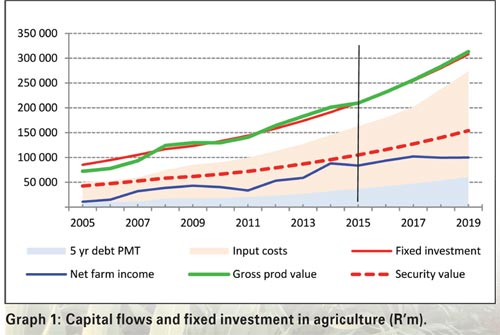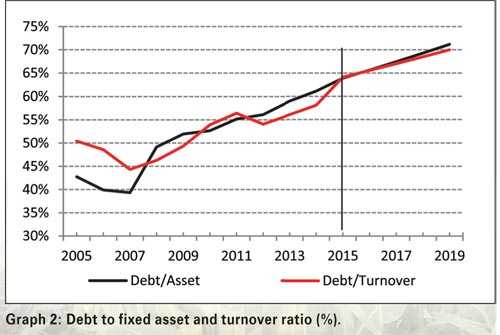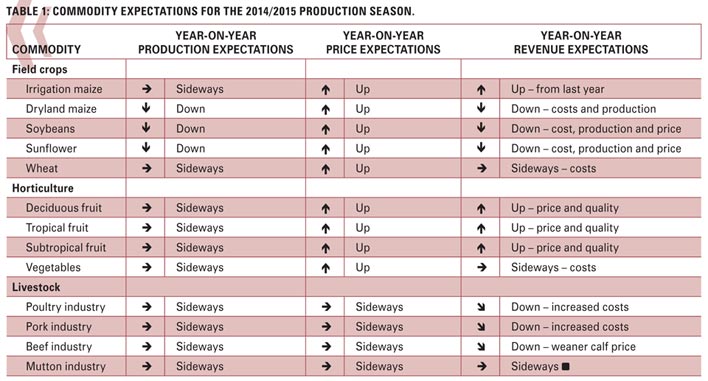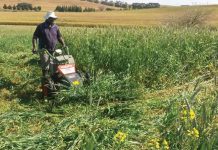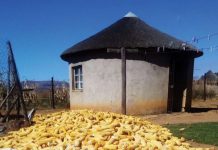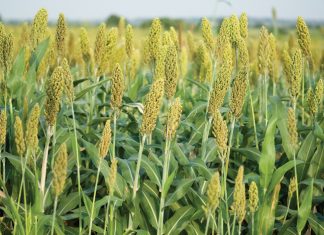May 2015
ERNST JANOVSKY, head: Absa AgriBusiness
Will the 2014/2015 drought have the negative effect on agriculture that everybody predicts? Particularly if one takes into consideration that the financial position of producers has improved substantially over the past decade with Net Farm Income (NFI) constantly outperforming inflation, as illustrated in Graph 1.
Net Farm Income is expected to decline by 6% year-on-year due to adverse weather conditions (drought). As livestock producers and horticultural producers are not directly impacted by the drought, it will be the grain producers who carry the bulk of the impact. The following can be used to identify the potential risk of a diversified farming enterprise:
The debt to asset ratio has continued to weaken as the cost of production (need for more debt) has increased faster than the value of the asset, from 18% in 1980 to just over 59% in 2014. This implies that one cannot use a constant ratio in evaluating debt.
It is however reaching a critical level in that the recovery value of a farm normally ranges between 60% and 70%. Producers are therefore running out of security, creating the need for new, innovative finance solutions that does not just rely on fixed assets as collateral.
Although the debt to turnover ratio (Graph 2) has deteriorated over the past few years due to input costs increasing faster than output revenues, the ratio has improved substantially after peaking at a high of 109% in 1986. From here it improved to an all-time low of 41% in 2007 and is currently at 58% and expected to continue to weaken. This is a clear sign that agriculture is in a cost curve and that producers are using debt to finance their shrinking profits.
Given the current drought and the financial trends mentioned above, the financial partnership between a producer and his financier needs to be constantly re-evaluated. Not just in terms of financial needs, but also on the grounds of good farming practices, because during a drought, mistakes in farming practices are highlighted and exposed. Farming entities are therefore differently affected by a drought – with one producer having no crop, while another still has a crop to cover costs purely based on the implementation of different farming practices. This is further complicated by the huge differences between commodities and the diversification of a farming enterprise.
Diversification therefore effects the survival of an enterprise during a drought. All of this speaks to how good the “jockey” is in managing production, marketing and financial risks – in partnership with his financier.
All of the above accentuates the need for a more individual approach rather than a blanket approach when it comes to the restructuring of carryover debt. It also emphasises the need for an enterprise to continuously evaluate the risk of doing business, and how it impacts the repayability of the enterprise.
Publication: May 2015
Section: Focus on



